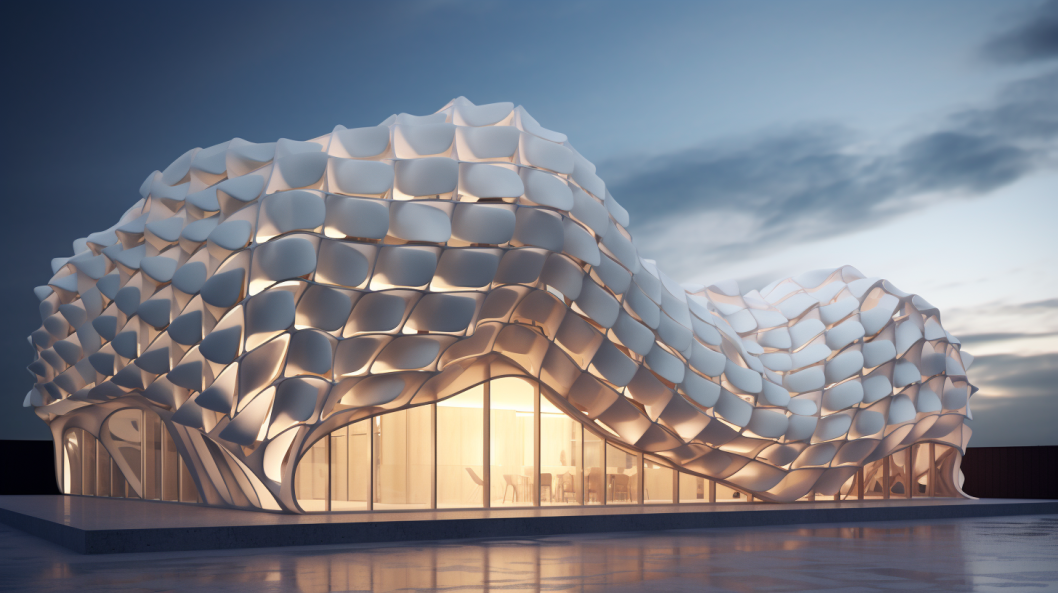Amidst the soaring skyscrapers and intricate architectural designs that define our urban landscapes, a silent revolution, driven by sustainability and energy efficiency, is taking place. The role of architectural facades is being redefined from merely an aesthetic envelope to a dynamic, adaptive skin that actively interacts with the surrounding environment. The exploration into parametric facades, particularly in their capacity to enhance energy efficiency, unveils a unique intersection of design, technology, and sustainability. Adaptive skins that subtly adjust to climatic conditions exemplify how architects and engineers are rethinking building design to meet the contemporary challenges of environmental sustainability.

Unveiling Parametric Facades:
Parametric design is characterized by the use of algorithms that enable the formulation of relationships between design elements, facilitating automated adjustments to diverse design parameters. When applied to building facades, parametric design fosters the creation of adaptive skins—dynamic structures that respond to varying external environmental conditions in a bid to optimize internal comfort and, critically, energy efficiency. These innovative facades can modulate light, heat, and air in accordance with external climatic conditions and internal requirements, thereby optimizing energy usage within the building.
The Energy Efficiency Impetus:
Global climate change, a depletion of natural resources, and the urgent call for sustainable development underscore the imperative for energy-efficient buildings. Architectural designs that incorporate adaptive features not only minimize a building's energy requirements but also significantly reduce its carbon footprint. Parametric facades stand at the forefront of this evolution, serving as a testament to how innovative design strategies can seamlessly merge functionality with sustainability, ensuring that buildings are not just consumers of energy but can dynamically engage with and respond to their environment in an energy-efficient manner.

Intelligent Modulation of Environments:
Adaptive skins respond intelligently to a multitude of environmental factors, including sunlight, temperature, and wind. For instance, during hot and sunny conditions, the facade can autonomously adjust its configuration to shield the building’s interior from intense sunlight, thereby reducing cooling requirements. Conversely, during colder periods, it can optimize sunlight penetration to enhance natural heating. The result is a nuanced modulation of internal environments that minimizes reliance on artificial heating, cooling, and lighting systems, thereby optimizing energy consumption.
Biomimetic Inspirations:
Interestingly, the concept of adaptive skins draws notable inspiration from biomimicry—emulating strategies found within nature to solve complex human problems. The dynamic responsiveness of parametric facades is reminiscent of organisms that adjust their appearance or structure in response to environmental cues. Just as pinecones open and close scales based on humidity to safeguard seeds, adaptive facades alter their physical properties to protect and regulate the internal environment of buildings. The biological parallel underscores how marrying natural principles with technological advancements can pave the way for innovation in sustainable architecture.

Case Studies and Implications:
Several pioneering projects have illustrated the potential of parametric facades. Notable examples such as the Al Bahr Towers in Abu Dhabi and the Institut du Monde Arabe in Paris have demonstrated how adaptive skins can be elegantly integrated into architectural design while significantly enhancing energy efficiency. These projects serve as a beacon, illuminating the tangible possibilities of integrating intelligent design with ecological stewardship.
However, there are challenges and considerations that emerge with the adoption of adaptive skins, such as technological complexity, initial cost implications, and maintenance requirements. Further, the architectural and engineering communities will need to navigate the technological and ethical considerations intrinsic to implementing increasingly intelligent and autonomous systems within our built environment.
The exploration into adaptive skins as an emblem of sustainable architecture lays bare the uncharted territories that straddle technological innovation and environmental sustainability. As we plunge deeper into an era that urgently demands the reconciliation of technological advancement with ecological stewardship, the foray into parametric facades offers a glimpse into a future where our buildings are not mere static entities but dynamic organisms that intelligently and sustainably interact with their environments. The interplay of design, technology, and sustainability encapsulated in adaptive facades exemplifies the boundless possibilities that unfold when we re-envision the boundaries and functionalities of our architectural endeavors.
This endeavor challenges us to continuously redefine the boundaries of what is possible within the realms of architectural design and to deeply entwine the principles of sustainability within every strand of our creative and construction processes. Adaptive, intelligent, and sustainable buildings are not merely a distant utopia but an imminent reality we are sculpting with every innovative step forward.

